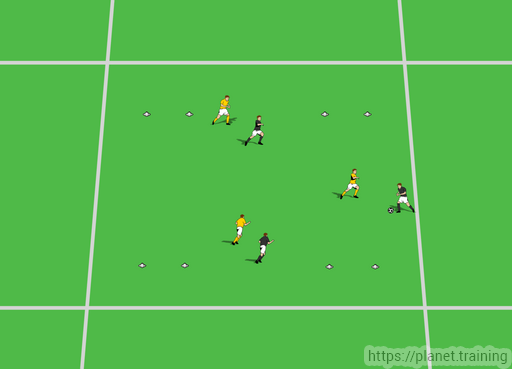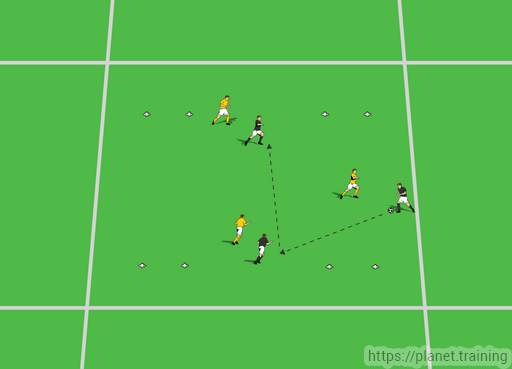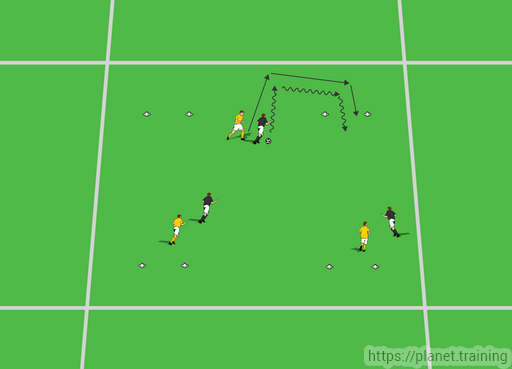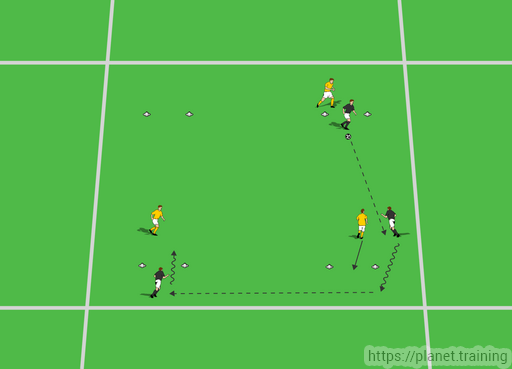By Alex Trukan
This practice is aimed at developing players’ ability to produce high intensity actions with possibly shortest recovery time in between them. This happens through improving refuelling time of ATP (energy) after anaerobic actions such as sprints, accelerations or quick bursts over short and medium distances. Therefore, if the energy will be available sooner, more high intensity actions can be then performed. From a technical point of view, the practice is focused on dribbling, staying on the ball and quick combination play. It also requires high levels of game understanding and decision making to create scoring chances and disorganise the defending team.
Set up and directions
Organise an area of approximately 25 x 30 yards (can be adapted to suit players’ ability). Set up four gates (3 yards wide) as shown on the diagram below. Divide the group into two teams of three. Prepare a sufficient supply of balls to ensure flow of the practice.

The practice starts with one team attacking, trying to establish possession and combine to create chances. The goal is scored by dribbling through any of the four gates from the outside.

Players should attempt to create the best scoring opportunity by combination play to find available goal as well as individual dribbling and tricks to beat a defender and create an overload.

Once a goal is scored, the attacking team remains in possession of the ball and tries to get as many points as possible. If the opposition team gets the ball, they score using the same method. If the ball goes out, it is restarted by dribbling it in or passing in from the sideline.

Timing:
The practice should be continued for 1-3 minutes and repeated 6-10 times in 2 series. The rest period between repetitions is 1-3 minutes, and between series – 4 minutes.
Variations:
- 4v4
- Two wider gates
- Pass/two passes through the gate to score
By Alex Trukan, Development Coach, Nottingham Forest
@AlexTrukan


